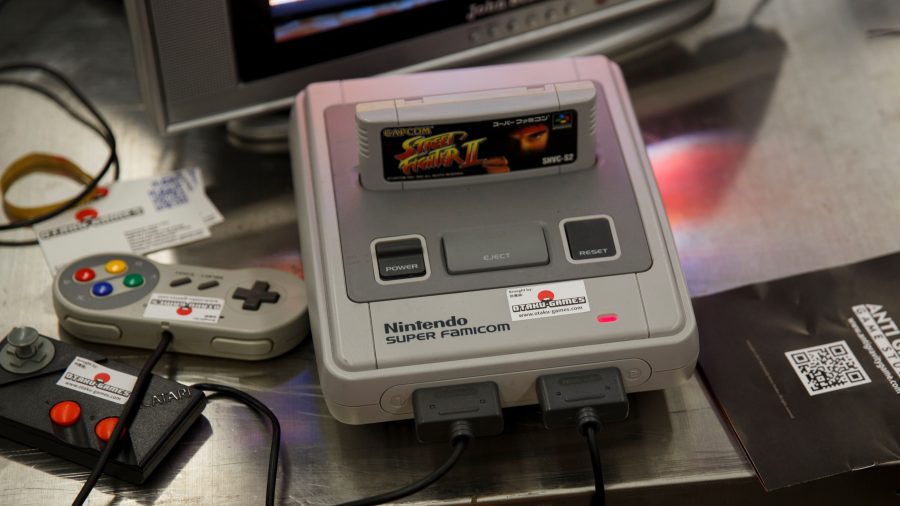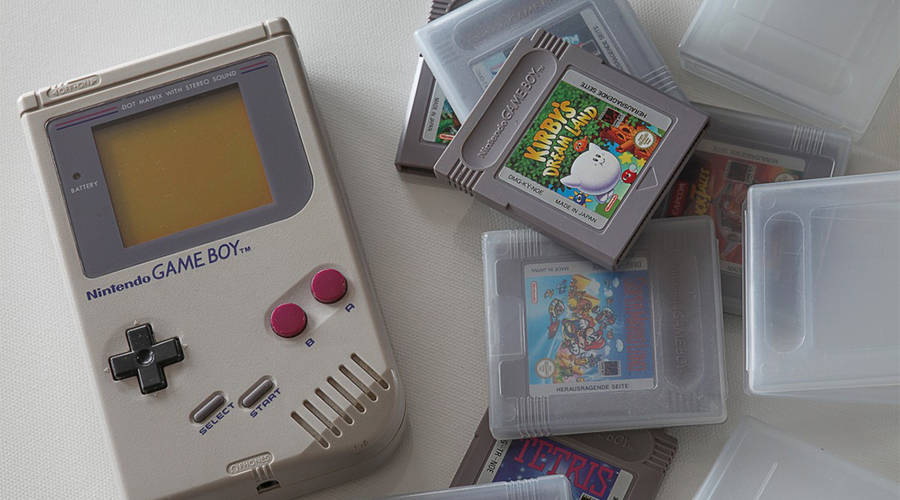New year, new age for the gaming console

Let’s take a trip down the technology memory lane to 1972, when Magnavox released what’s considered the first gaming console, the Odyssey. And in 2022, it will be 50 years since we started turning our TVs into gaming stations.
More of us than ever started gaming in the pandemic, and we wanted to take this moment to check on how the business of the Nintendos, PlayStations, Segas and Xboxes has changed over the years.
Marketplace’s Kimberly Adams spoke with Jana Arbanas, Deloitte’s telecom, media and entertainment sector leader. She said consoles have evolved considerably. The following is an edited transcript of their conversation.
Jana Arbanas: I remember using video consoles myself as a child, and the experience that my own son today can achieve in the gaming consoles today is vastly different in terms of that immersive experience, the ability to connect with other players throughout the game. Not to mention how the console enables you to customize your own avatar or character within the game. These are just a number of the ways that the gaming console has sort of evolved over time.
Kimberly Adams: Was there sort of a tipping point between when consoles were sort of a niche product and when they became common household items?
Arbanas: I would say probably in the last five to 10 years, they’ve become more household items. I also know that older generations are using consoles in different ways to interact with gaming platforms. So I do think that the consoles of today cater to a much broader audience and, again, create that connectivity between players that is such a valued part of the experience today.
Adams: Over the last 50 years, how has the business model of gaming consoles changed?
Arbanas: Now, it’s more of a subscription base, where you’re paying on a monthly basis, you’re getting access to a really immersive gaming experience. So-called chapters are released over time, so that game is not a static game. Rather, it’s an evolving game that transforms and retains that connection with the player.
Adams: What kind of money are we talking about in the console industry at this point, and is the money in the consoles, or is it in these add-ons?
Arbanas: So we are predicting that the [worldwide] console market will generate $81 billion in 2022, which is up 10% from 2021. We’re predicting about $59 billion of the $81 [billion] is coming from the software sales.
Adams: And how has the pandemic affected the gaming industry?
Arbanas: Well, more people are gaming than ever before. In fact, we’re predicting that there’ll be about 900 million console gamers by the end of 2022. And really, during the pandemic, gaming was an important way for people to feel connected. And people are also enjoying, again, that ability to personalize the gaming experience by creating virtual avatars, buying virtual accessories and skins, even attending virtual concerts in the gaming world.
Adams: We are still experiencing this global chip shortage. How much will that affect what you’re predicting for the console market heading into the new year?
Arbanas: Supply chain disruption has continued to be, I would say, a real challenge for all consumer goods and gaming consoles as well. And while the pandemic has caused some of those interruptions, we also know that sheer demand has been a real significant driver of some of the supply chain delays that we’re experiencing. So gaming consoles are absolutely in high demand and short supply, so it’s likely, I think, we would even see higher growth if it weren’t for the supply chain challenges that we’re experiencing this year. And we are predicting that some of that supply chain challenge will be worked out through the course of 2022 into 2023, and that products will be more readily available to consumers. And so I actually think that this growth that we’re predicting is a reflection of the perhaps challenge with the supply chain, but that growth will continue as we head into 2023.
Adams: Those shortages and supply chain challenges are cropping up everywhere, leading to some of these kinds of eye-popping inflation numbers that we’re seeing across the board. Is that showing up in the console market as well?
Arbanas: Yeah, I mean, I do think that people are paying more for a richer experience. In fact, some people are saying it’ll actually take years for developers to truly harness the advantages that are contained within the new hardware itself and have it fully taken advantage [of] from a software perspective. So yes, I do think that the cost is certainly going up. But again, as we talked about, that is a one-time cost and sort of the additional costs on top of that come from the software and services and other virtual purchases that are happening within the gaming console itself.
Adams: In some ways, does that make consoles less accessible than they used to be? I mean, because it used to be that once you buy the console, you can play the game forever and keep using it. But now with it being so connected, does it mean that you can only game if you can afford to keep paying?
Arbanas: I think it’s an interesting perspective. I think the console creates that really compelling experience, which I think has actually brought more consumers to gaming because of the amazing experience that they can create — the virtual world that they can engage with others in. However, you’re right, the console is an expensive part of that proposition. We also see mobile gaming, which is a less immersive experience, but available to anyone on their smartphone, that is also on the rise. In fact, it’s slightly higher than a console in terms of the number of people that play at least once a day. So I do think that mobile gaming will continue to be strong for those individuals that perhaps don’t have access or can’t afford the console experience. And then over time, in the future, there will be a continued shift toward the cloud. However, I think at this time the console is just producing such a compelling experience for many users that the demand is still quite high.
Adams: Ideally, we will eventually see an end to this pandemic, and people will start to go out more. Do you anticipate gaming keeping up this momentum, once people are able to more safely be out and about?
Arbanas: At the beginning of the pandemic, about a year ago, when we did our digital media trends survey, we learned that people were spending more time gaming. And when we checked in with people a few months ago, during our pro survey, arguably at a time where people were getting out more often, live entertainment events were available, we found that most people were spending still more time in online entertainment. So I do believe that there is a persistent change in behavior that has occurred and will continue to persist once the pandemic has ended. And I do believe that gaming is here to stay. I think that many people that perhaps hadn’t had a chance to really engage from a gaming perspective have enjoyed that experience and will continue to keep that experience as part of their overall entertainment that they spend time on.
Related links: More insight from Kimberly Adams
Deloitte took a look at the gaming console at 50, with more details on the business side of things and the profitable future ahead. One point from the research: In the U.S., the majority of 14- to 24-year-olds rank gaming consoles as their favorite form of entertainment, ahead of TV and streaming video.
Above, there’s also this promotional video for the Odyssey. The Strong National Museum of Play posted it on YouTube, and it’s very 1970s. Wow, how far we’ve come in 50 years.
The future of this podcast starts with you.
Every day, the “Marketplace Tech” team demystifies the digital economy with stories that explore more than just Big Tech. We’re committed to covering topics that matter to you and the world around us, diving deep into how technology intersects with climate change, inequity, and disinformation.
As part of a nonprofit newsroom, we’re counting on listeners like you to keep this public service paywall-free and available to all.
Support “Marketplace Tech” in any amount today and become a partner in our mission.

















